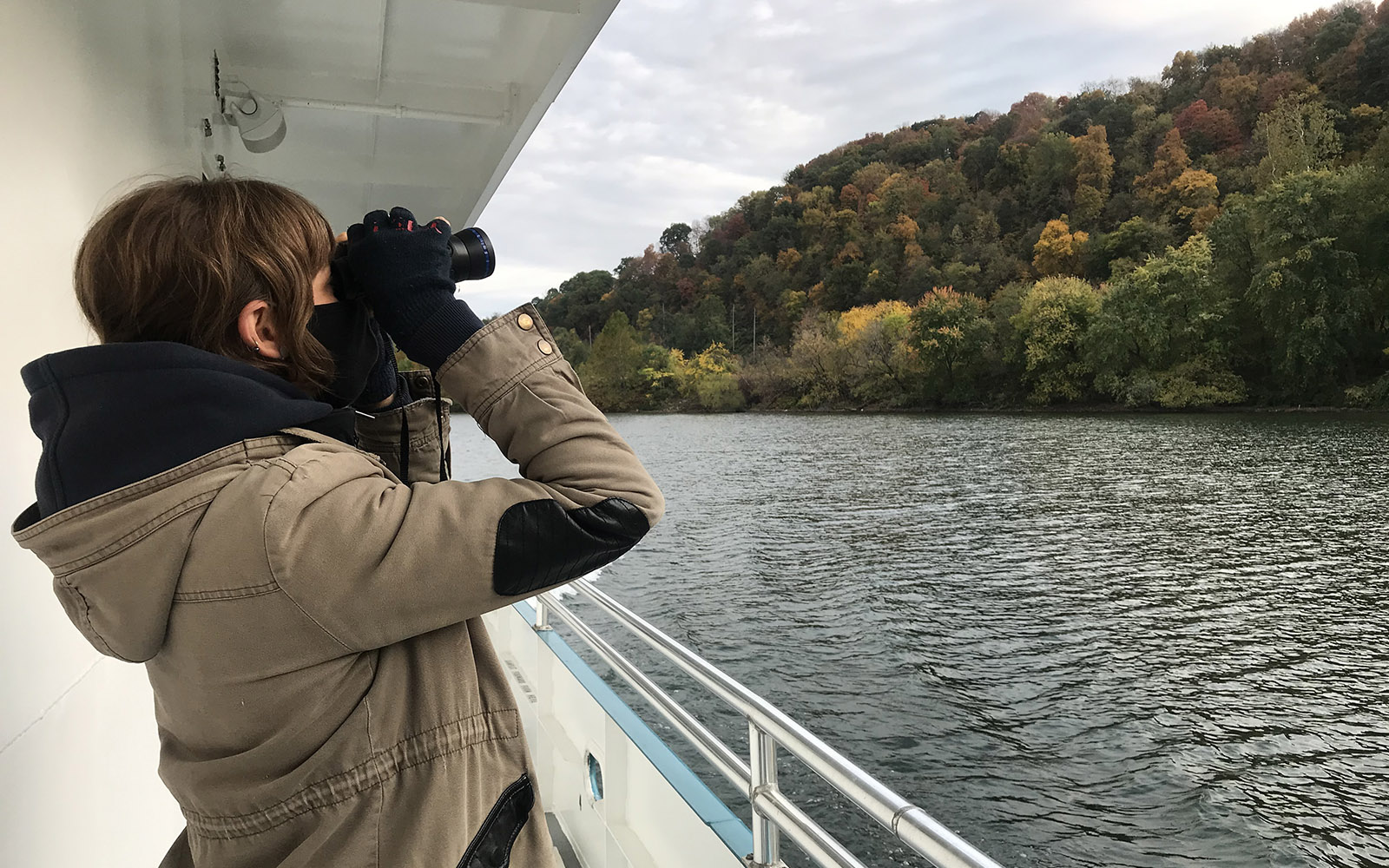
By Angela Biederman, Chief Deckhand | Featured Image: Angela Biederman birdwatching on the Explorer riverboat.
 Migratory Bird Sightings
Migratory Bird Sightings
While much of River of Steel’s activity has quieted down, there is still a lot happening on Pittsburgh’s three rivers. This time of year brings many migratory birds. Since I come to Explorer almost every day, even in the winter months, I’ve been fortunate to spot several species passing through or coming here to winter. Some of them have been quite rare.
To start, some more common birds that migrate through Pittsburgh are the American Coot and Bufflehead. I saw these early in the season, around mid-to-late October, some right here at Explorer’s dock. This past month, however, has brought us some real rarities: a female Long-tailed Duck, a female Surf Scoter, and a group of three White-winged Scoters, to name a few.

First sighting of the Surf Scoter, viewed through binoculars.
I have only recently started to really take an interest in birding, and put in the time to observe and identify species. Yet, my time spent outdoors throughout my life has made me gradually familiar with many common bird species. In the last two-and-a-half years I’ve worked on Explorer, I’ve also been able to spend a lot of time watching and identifying waterfowl, especially since that’s a part of our educational Environmental Science on the Three Rivers program. We were also extremely fortunate to have Bob Mulvihill, formerly with the the National Aviary, host two guided birdwatching tours in August 2019, a program we are excited to offer again next year when the pandemic has hopefully subsided.
The first pair of migratory birds I saw were really not a pair at all, which made them challenging to accurately identify. I saw two diving birds, a lighter one and a darker one, and assumed they were a male and female. However, after watching them for several hours, taking photographs, and paging through a Peterson’s field guide onboard, I reluctantly wondered if one was a female Long-tailed Duck, and the other a female Surf Scoter. Close up, the plumage and bills of these ducks were quite different. It didn’t seem probable that they were two female birds—of a separate species, no less—and neither species was one I’d seen before.
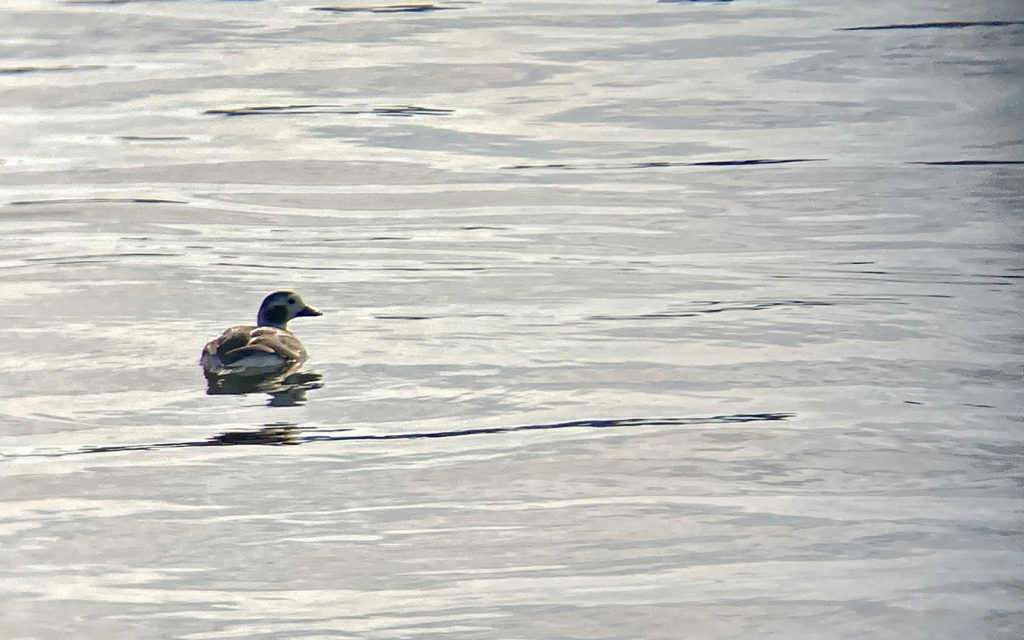
A Long-tailed Duck.
Still not entirely sure of what I’d seen, I consulted Captain Ryan O’Rourke, who has much more experience when it comes to birding. He has been birdwatching from Explorer for over a decade, and even compiled a book on Birds of the Three Rivers. He was able to identify the Surf Scoter almost immediately, and has seen a pair in years past. It was with his input, and the help of some assuring bird identification apps, that we were able to also identify the Long-tailed Duck. This was a species even Ryan had never seen.
That “pair” was spotted on November 12th, and that was the first and only time I saw the Long-tailed Duck. The Surf Scoter, on the other hand, hung around for a while. I saw her on four other occasions: twice before Thanksgiving, and two times after. The Surf Scoter was seen foraging all around the head of the Ohio River near Point State Park, near the boat launch under Heinz Stadium, in the middle of the channel off Explorer’s starboard side, and off the stern of the boat near the West End Bridge. Admittedly, I became quite fond of this bird, and would get a little jolt of excitement whenever I would see her. (I even nicknamed her Melani P, after her scientific name Melanitta perspicillata. I also lost track of many hours throughout the days watching her.) I did some research on this particular species: they breed across the northern part of the continent, on rivers and lakes in boreal forest that border the tundra, and winter further south along the Pacific and Atlantic coasts in flocks of up to a thousand. Occasionally in winter, they come inland to freshwater areas to wait out bad weather, and there are a select few New England states they might remain in for a period of time. Learning this, I started to get the sense that perhaps she lost her flock, largely because she was always alone after that first day she was with the Long-tailed Duck. Maybe she was still making her way to the shores, where she’d meet up with a paddling of other scoters. Each time I saw her, I never knew if she’d be around the next day.
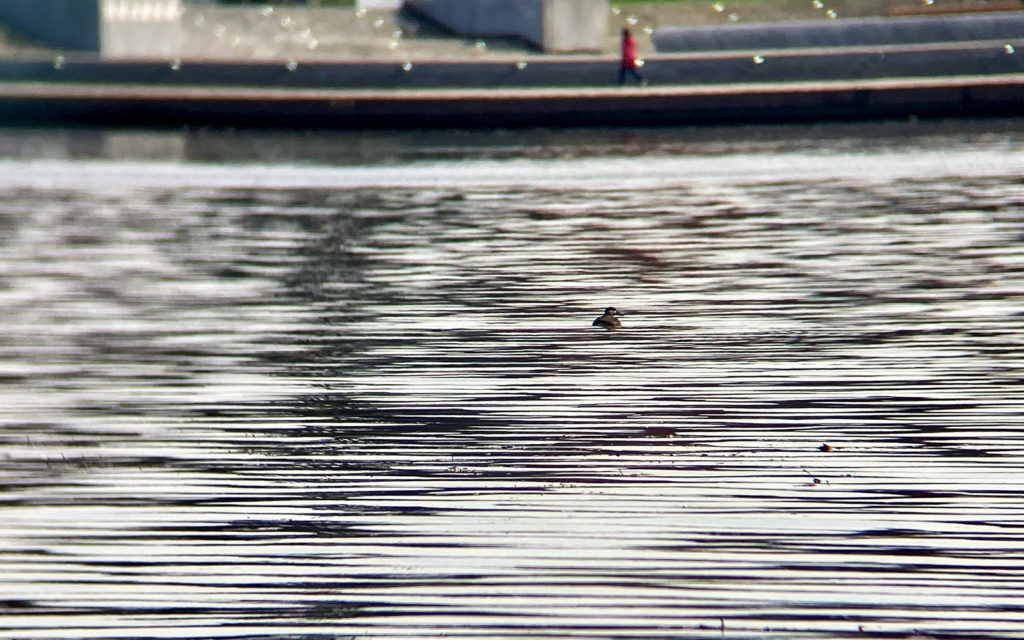
Surf Scoter at Point State Park.
I haven’t seen her since December 10th, but Monday of this week brought a small group of three birds that I almost immediately identified as scoters. One was black, and two were brown; initially, I thought a new pair had come in and the Surf Scoter had finally met up with a pair of her fellow species. Watching them throughout the day—as they came closer to the boat and took off in flight up– or downriver, or dove for food—I saw they had an unmistakable white wing patch that strongly differentiates the White-winged Scoter from Surf Scoters. The males also have quite different markings: both are black, but the White-Winged Scoter has only a small “teardrop” patch of white around its eye, rather than one or two white spots on its crown or nape. I also noticed these divers made a different splash when they left the water’s surface: the largest of the three scoter species in the US, they don’t dive quite as gracefully as the Surf Scoter.
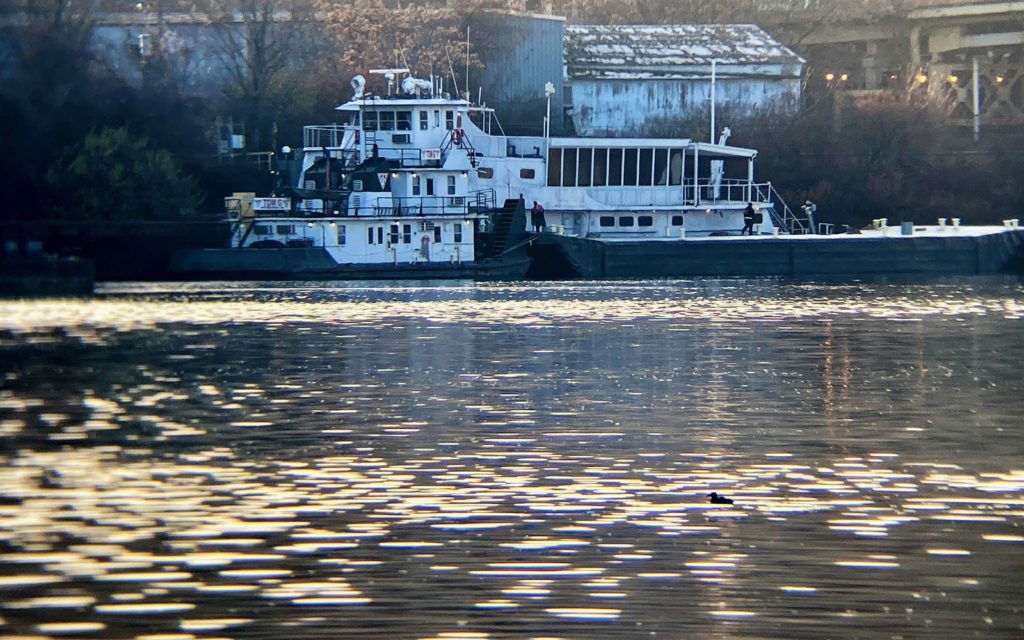
A Surf Scoter and a tow boat.
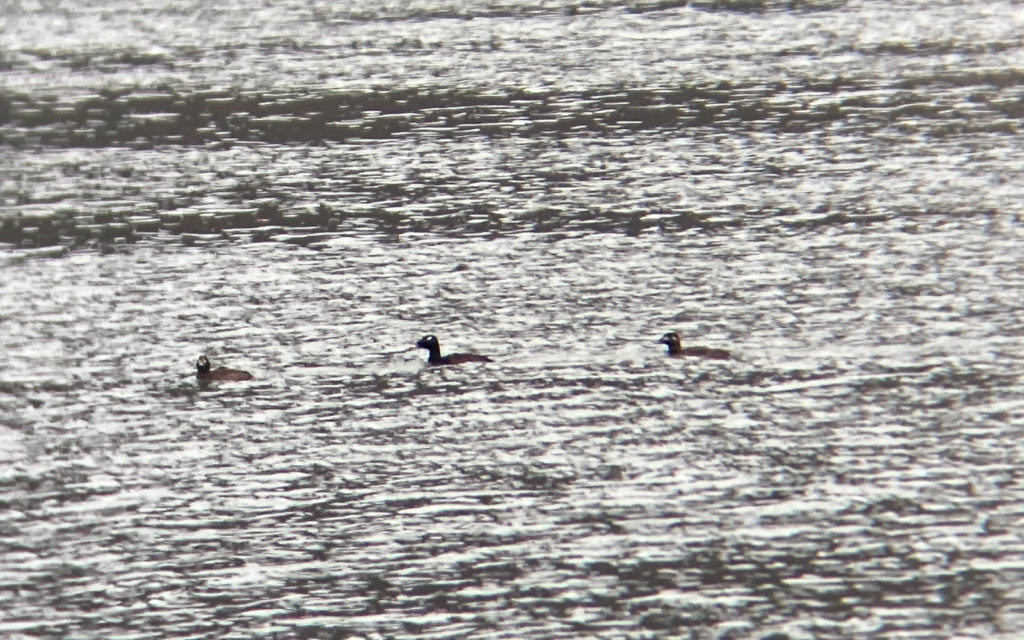
Three White-winged Scoters.
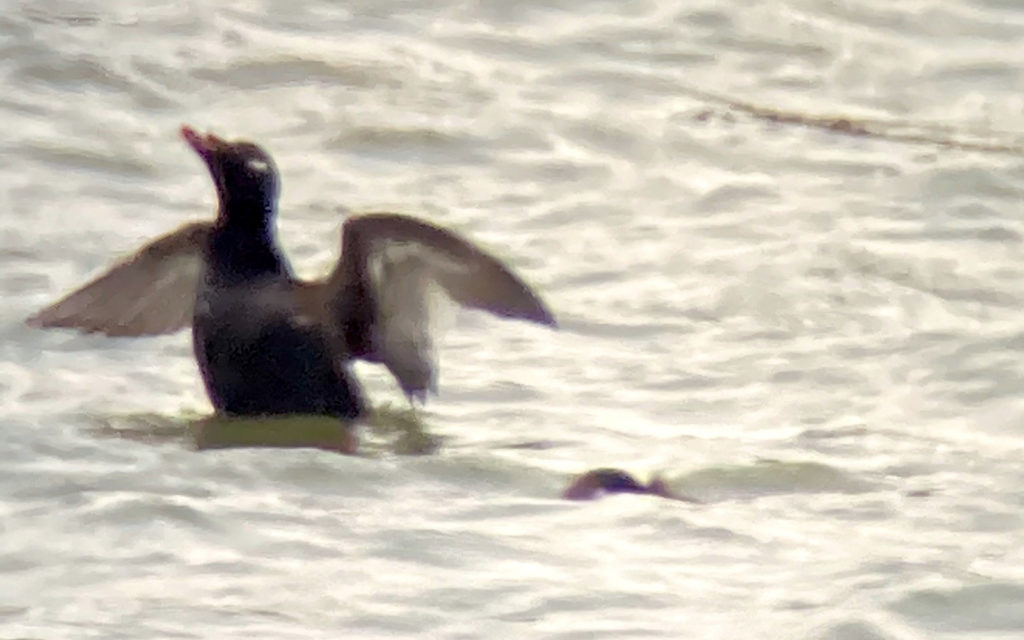
Flapping White-winged Scoter.
The White-winged Scoters, like the Long-tailed Duck, were here, to my knowledge, for one day. I’ve also been watching Pied-billed Grebes, the flocks of Ring-billed Gulls that regularly come here in winter, Mallard Ducks (the males of which have extremely bright green plumage on their heads this time of year), and the Double-crested Cormorants that I bike past on the riverfront trail nearly every day. Like clockwork, an adult and a juvenile cormorant are perched on top of the gray pilings at the boat launch under Heinz stadium. The last three days, Captain Ryan and I have also seen a lone female merganser. I think she’s a Red-breasted Merganser, but he’s pretty sure she’s a Common Merganser. The jury’s still out on that one.
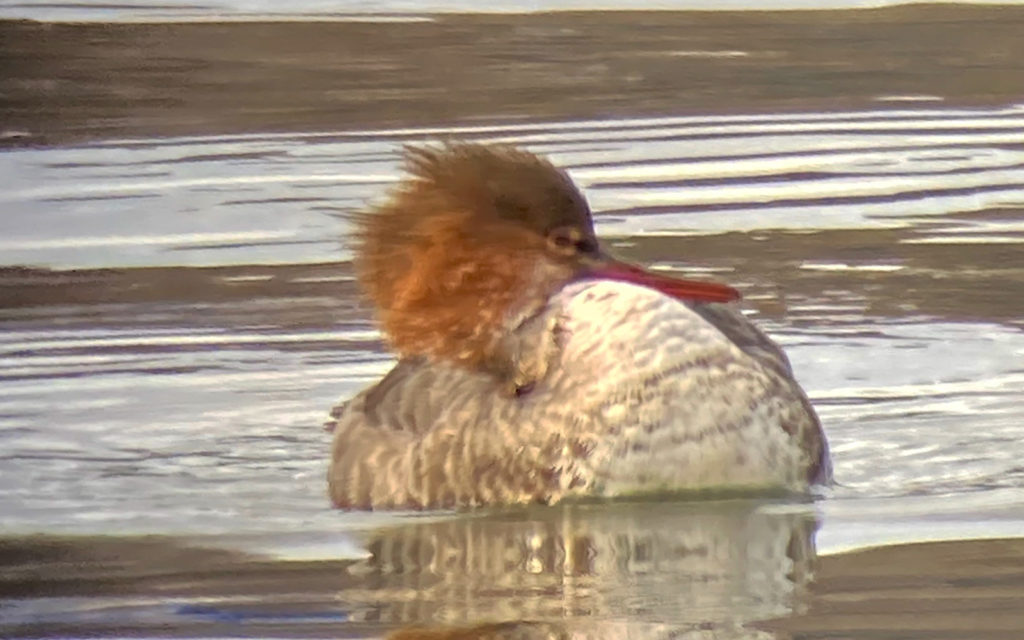
Common or Red Breasted Merganser?
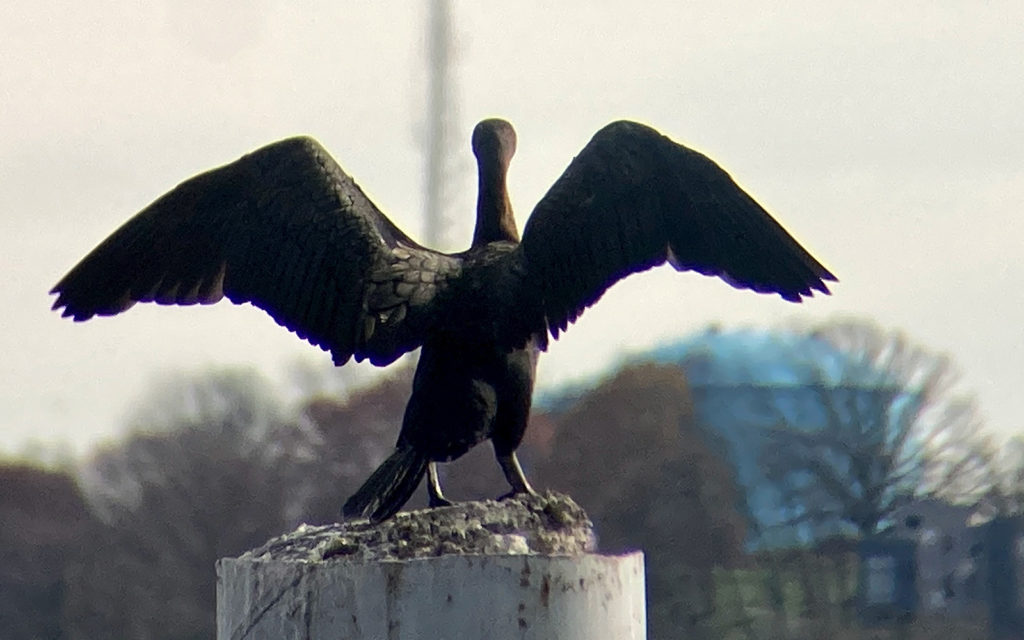
Cormorant through binoculars.
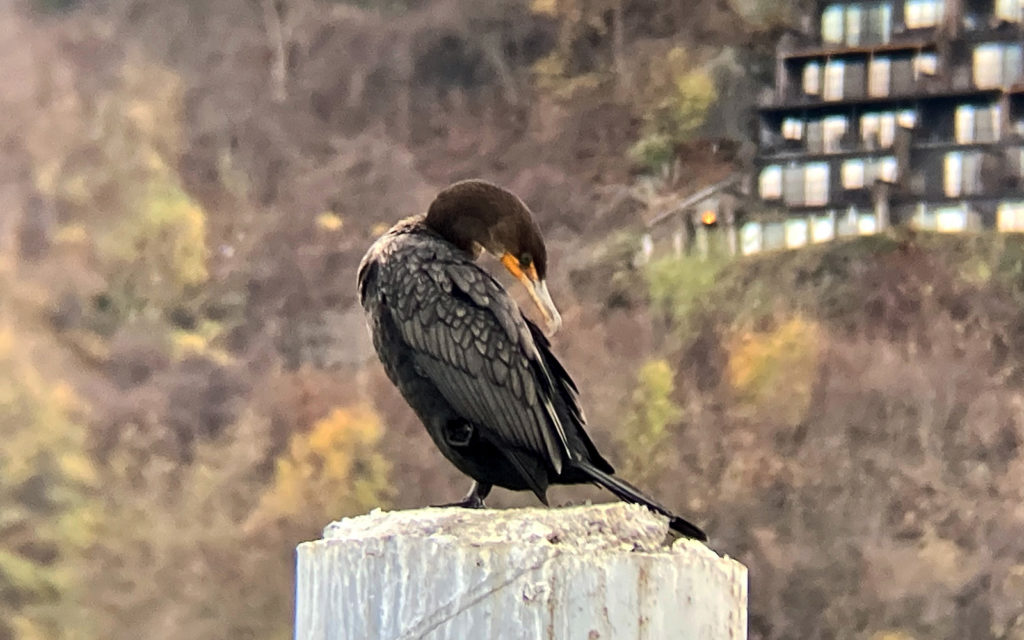
Curled Cormorant through binoculars.
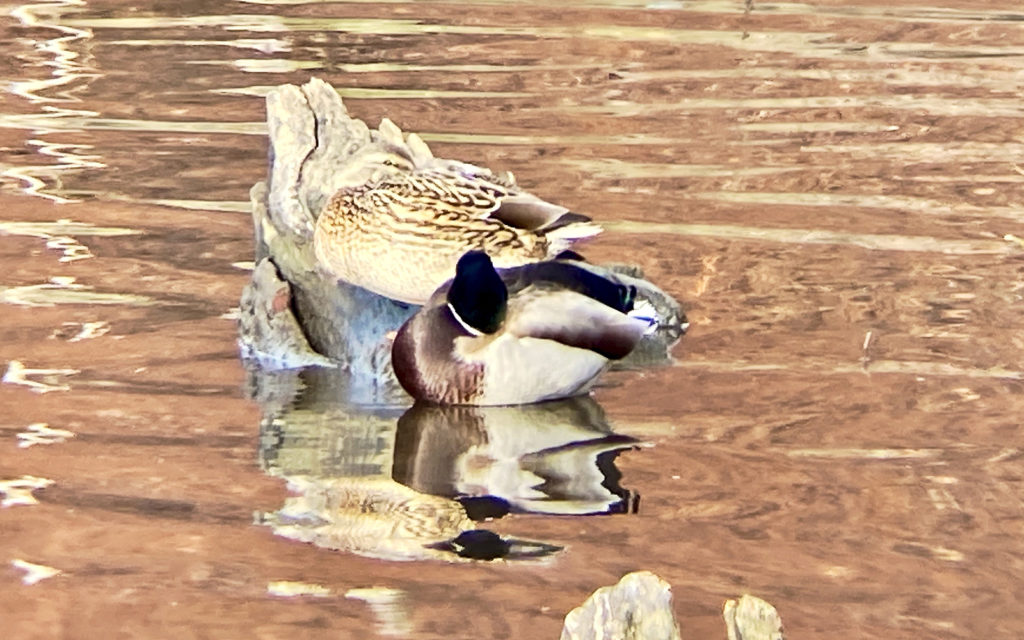
Mallards.
Angela Biederman began working for Rivers of Steel as a part-time deckhand in March 2018. About a year later, she became the full-time Chief Deckhand, and is responsible for maintaining Explorer year-
This photo essay is the first of what we expect to become a series of articles by Angela highlighting her sightings of migratory birds. All the images of the birds were photographed by her.

 Migratory Bird Sightings
Migratory Bird Sightings





